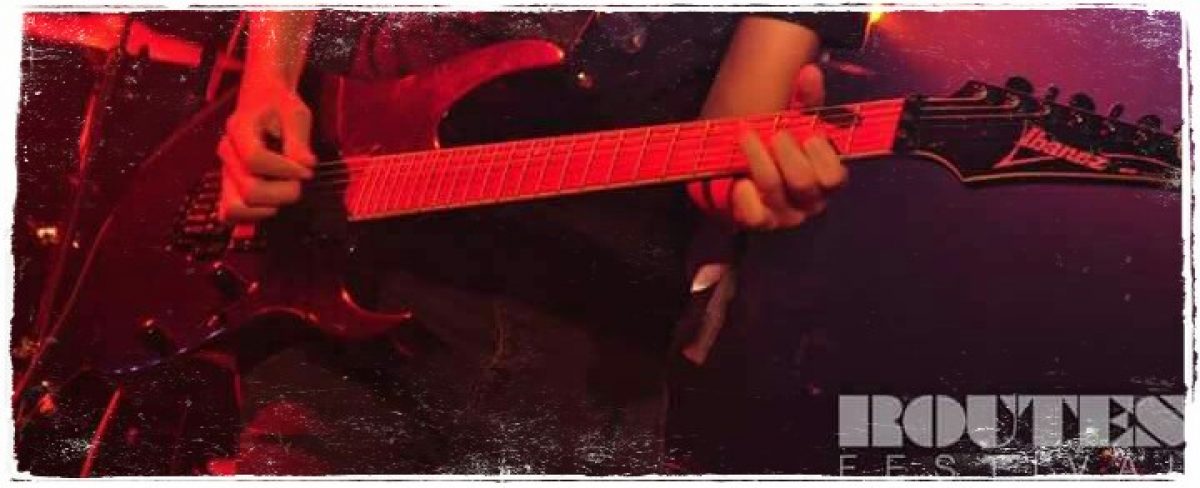To record my EP, I have already decided to record directly through my Boss GT-10 guitar effects processor, as I am accustomed to using it and have my guitar tones set up already.
The setup that I will actually be using to produce my guitar sound is my Boss GT-10 guitar effects processor:

I have used this pedal for a few years now, and have become accustomed to using it.
This pedal features several saved channels that can be edited, and 4 separate foot-switches per channel. This also has a main pedal that can be set to use any effect from wah to an octave pedal.
Each foot-switch can be set up individually, and this makes it perfect for using in the recording room, as the settings are saved to the pedal rather than the computer. Not only this, but this also means that I can use the same settings used in recording when I perform these tracks live, meaning that the guitar sound to the tracks remains authentic to the EP.
I had originally thought about recording guitar through my Line-6 Spider II guitar amplifier, as this amp in particular has a really good distortion channel.
 I decided against this idea mainly because my pedal is far easier to transport.
I decided against this idea mainly because my pedal is far easier to transport.
Not only that, but I do not have a foot-switch for this amp, and the clan sound of this amp doesn’t sound as nearly as good as my pedal’s.
Finally, using a pedal opens up more opportunity for using extra guitar effects such as wah and reverb.
The two guitars that I will use for recording with are an Ibanez RGT 6 EX, and an ESP LTD MH 401-FR.
The reason I have chosen these two guitars as my instruments of choice for my project, is because they both have the drive of the EMG active humbuckers, and are both tailored specifically for the Metal guitar player.
 -This is the Ibanez RGT 6 EX.
-This is the Ibanez RGT 6 EX.
-This has been my go to guitar for the past five years of my career as a guitarist, and has a really strong rhythm sound.
-The floating style bridge combined with the low action and thin neck allows really fast play styles to be achievable, and opens up the opportunity to use the tremelo arm.
-The EMG active humbuckers on this guitar provide a strong bass end to the tone of this instrument, making it a good candidate to record my rhythm guitar parts with.
 -This is the ESP LTD MH 401-FR.
-This is the ESP LTD MH 401-FR.
-This is a new addition to my arsenal of guitars, and will soon be replacing my Ibanez.
-The Floyd Rose Special bridge gives a whole new feel to the tremelo arm, giving it a far wider range and ease of use than the Ibanez, and this will almost certainly be a featured in my tracks.
-The EMG active humbuckers on this guitar give a powerful tone and a strong bite when using distortion channels, but also a mellow but pronounced clean tone. Making this perfect to fit the role of lead guitar.
Some of the recording techniques I will try to use in the studio are:
Triple tracking guitar parts:
When researching into Metallica, I discovered the technique of recording a guitar part three times, then having one panned left, one panned right, and one left in the middle. This gives the guitar a bigger and more powerful sound than a single track would.
I will try using this in my own work if I have time to take multiple takes of each line as they all need to be near enough the exact same as each other.
EQ settings:
I will likely be editing the EQ of each track on my recordings. This might be to raise or lower the levels of bass, middle, and treble frequencies. This will be different depending on the instrument and what part is being played. This can also be used to completely cancel certain frequencies of a track that are unwanted, and can make a part sound much cleaner.
Effects:
I will be using various effects on my guitar sound vis my Boss GT-10 pedal board, as I have already mentioned. some effects that I will definitely be using in my work are: Reverb, Wah, and Delay.
